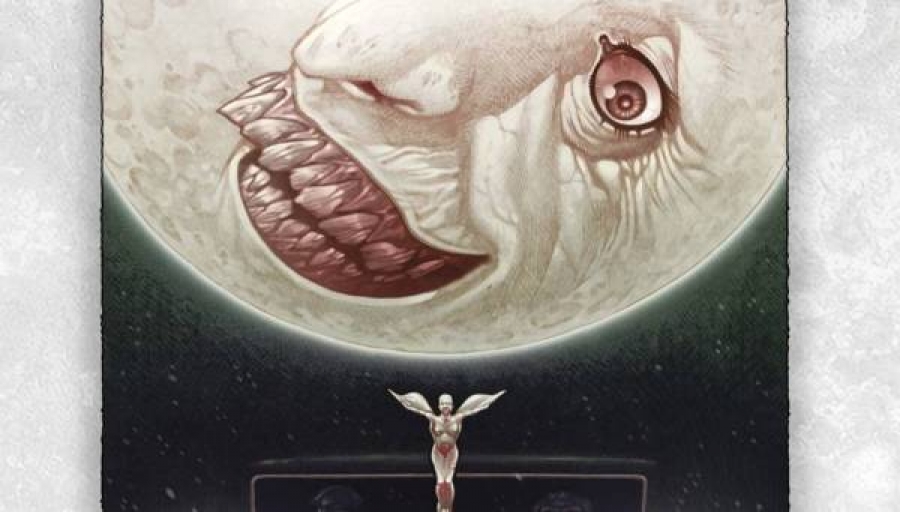Joe Hill’s Wraith tells the origin story of Charlie Manx and Manx’s hellacious domicile, Christmasland. In its essence, Wraith is a story told in the style of the grand guignol: the lowest forms of humanity come to an extremely violent end in a literal carnival of blood, brains, and smashed organs. Throughout, the reader is invited to take pleasure in the suffering of scoundrels, so if schadenfreude is your cup of tea, you very well may enjoy this yule-themed massacre.
Charles Paul Wilson III’s artwork is vibrant, and it is the prime feature of Wraith. Clearly inspired by the EC masterpieces of yesteryear, Wilson manages to cram each and every page with a sense of dangerous vivacity. Manx’s manic presence is always hovering just around the edges of the frame, as inescapable for the reader as it is for the doomed few who ride in the demon’s nightmare jalopy. Readers may find that the character and his representation bear more than a passing resemblance to various versions of DC’s Joker. The resemblance is so strong, at times, that it can become a distraction, though Manx never descends into the manic confusion that makes Batman’s longtime foe so compelling.
Wraith presents an entertaining story, but the plot is as predictable as a late-entry Home Alone film. This predictability is not necessarily a bad thing, as it is fully representative of Wraith’s storytelling style. In a narrative where gore rules, there is little need to surprise the audience, as the audience is presumably already locked into whatever the writer wants to deliver, as long as the delivery arrives smeared in entrails. This is not to say that there are no imaginative moments, because there are moments in Wraith that take the reader to unexpected places, but these moments often unfold in the language of surrealism, which makes for few truly startling twists and turns. For example, when the writer can draw from the impossible to resolve a challenging series of events, the reader can be pleased, but the reader can’t be asked to marvel at the writer’s imagination. Such twists and turns leave the reader feeling a little cheated, as the writer isn’t held accountable for his earlier choices when he indulges in these well-timed (and in one case quite literal) flights of fancy.
Considered broadly, Wraith has deep resonances with select works from Clive Barker, particularly with the Book of Blood collections — though it does not achieve the level of those stories. Manx and the Demon children have the fairy tale quality of Barker’s original American, which lives just below the normal world in a reality squirming with squirm-inducing terrors; however, if there is a touch of Barker here, there is also a much more profound homage to the torture-porn wave that overran the last decade with films like Saw and House of a Thousand Corpses, and the various works of writers and directors like Eli Roth (e.g., Hostel). This aspect of Wraith is manifested in the cruel, predictable, and unrelenting brutality that paces the reader page to page, chapter to chapter, until the end of the story. It can be recommended to Hill’s fans.

